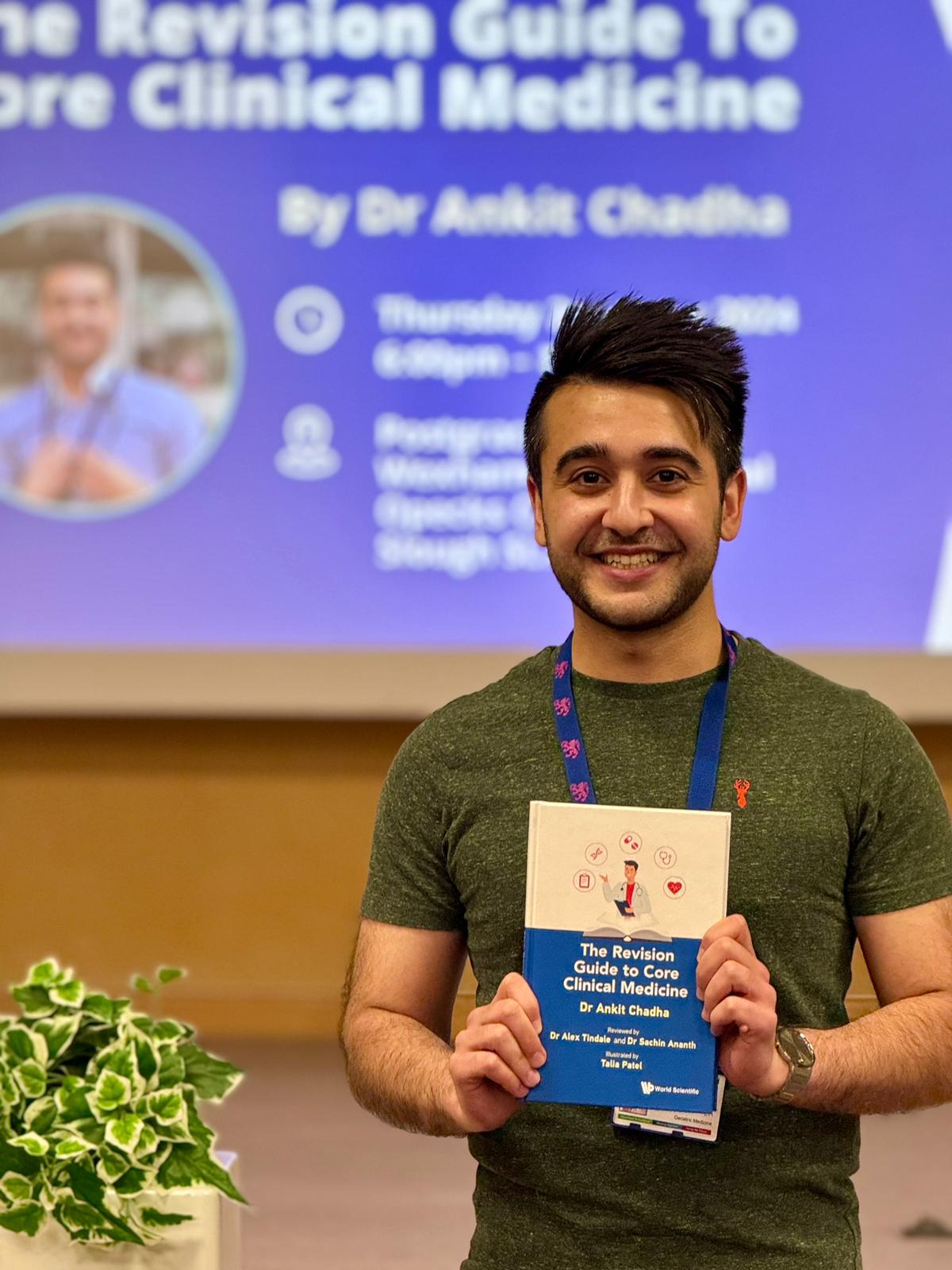2024 in review
Dear Friend,
After 52 weeks, this marks my final newsletter of 2024. A year ago, I decided to start writing a weekly newsletter to better engage with the In2Med community (that’s you!) and share insights from my personal experience. It was also an opportunity to give you a glimpse into the person behind the notes and MCQs. When I first started, there were about 2,500 subscribers. Last week, that number had grown to 3,894—so it’s encouraging to see more people subscribing than unsubscribing.
One of the biggest lessons I’ve learned from doing this weekly newsletter is the importance of consistency and patience. Although I only send out an email once a week, maintaining this routine consistently has been challenging. I remember a few times when I returned from a night out on a Saturday and still made sure to write the newsletter. In recent weeks, I’ve managed to prepare them in advance. And, on occasion, I’ve had a little help from my friend Chat-GPT (I’m sure you can tell which ones!). But in the end, I’ve managed to keep up with 52 newsletters in 52 weeks—and I’m quite proud of that.
For this final newsletter of 2024, I wanted to reflect on a few key lessons I’ve learned this year. Maybe some of these will resonate with you:
1. Recognizing Burnout is Crucial
I’ve written about burnout before, and it’s still one of my biggest realizations of 2024. IMT can be incredibly demanding, and if you’re not careful, it can quickly start taking a toll on your physical and mental health. It’s important to pay attention to your energy levels, book annual leave in advance, and sometimes slow down the pace. Taking care of yourself now will pay off in the long run.
2. There is Light at the End of the Tunnel
Back in February and March 2024, I was starting to lose hope in IMT. Endless shifts, the looming PACES exams, and the feeling of an unending grind were getting to me. But now, eight months later, I’m just seven months away from completing IMT, I’ve gone through my registrar interviews, and I’ve completed my exams. I can finally see the end in sight, which has given me a renewed sense of motivation to power through these final months.
3. Celebrate the Highs
One thing I’ve learned this year is the importance of celebrating the good moments—because they’re rare. In the NHS, we often focus on complaining about what’s going wrong, so when something positive happens, we don’t always know how to react. Either we brush it off or immediately shift our focus to the next challenge. I nearly did this after publishing my first book this year. Once it was released, I was already thinking about how to market it, and when it hit 100 sales, I was wondering how to reach 200. But now, looking back, I realize that simply publishing my first book was an incredible achievement in itself. The sales don’t matter as much as the fact that I accomplished something I set out to do.

4. Stay Physically Active
Long hours, night shifts, poor eating habits, stress, exams, Christmas—these are all easy excuses to neglect your physical health. I’m always surprised at how long it takes to get in shape, and how quickly you can lose it. I’d say I was at my optimum weight before starting IMT last year, but when I stepped on the scale recently, I was over a stone heavier. So, come January, I’m committed to a solid exercise routine and healthier eating habits—and for now, I’ll have to park my Friday night drinks!
5. Relationships Matter
As dedicated as you might be to your work (and in my case, work often takes up a significant portion of my life), I can’t overstate how important relationships are. When you’re with the right person, you’re more productive, and work feels easier—even during the toughest times, like exams. My big takeaway this year is to appreciate the special people in your life. And if you haven’t yet bought that thoughtful Christmas gift, there’s still time!
Those are a few of my reflections from this year—perhaps you can relate to some of them. I’ve truly enjoyed the process of sharing my thoughts with you every week, and it’s something I plan to continue into the new year.
And, in true IMT fashion, my final shifts of 2024 just happen to be night shifts.
Drug of the week
Lubiprostone
This is a new class of laxative derived from prostaglandin E1.
It acts by specifically activating ClC-2 chloride channels on the apical aspect of gastrointestinal epithelial cells.
This helps to produce a chloride-rich fluid secretion which softens stool.
It is used to treat chronic constipation in adults and irritable bowel syndrome associated with constipation in women.

A Brain Teaser
An 83-year-old man presents to the emergency department with acute-onset abdominal pain that began 8 hours ago. He describes the pain as severe and cramping and reports the presence of blood mixed with his stool. His medical history includes type 2 diabetes mellitus, atrial fibrillation, and peripheral vascular disease.
A computed tomography (CT) scan shows segmental thickening of the large bowel wall suggestive of bowel necrosis. Portal venous gas is observed, along with gas in the bowel wall.
Considering the most likely diagnosis, which site is most likely affected?
A: Ascending colon
B: Caecum
C: Descending colon
D: Sigmoid colon
E: Splenic flexture
Answers
The answer is E – splenic flexure
Splenic flexure is the correct answer. The patient presents with clinical features that are indicative of ischaemic colitis, a condition more commonly seen in individuals over 60 years old, and associated with risk factors such as diabetes and peripheral vascular disease. If ischaemia is severe enough and is not relieved quickly, then a predictable sequence of events will usually be observed: necrosis of the bowel wall, bacteria proliferation in the bowel wall, releasing gas in the wall itself (pneumatosis intestinalis), and gas goes through mesenteric vessels into the portal vein (pneumatosis portalis). This is responsible for the CT findings seen in this patient. Ischaemic colitis frequently occurs in ‘watershed’ areas, which are zones where arterial supply overlaps, therefore when an occlusion occurs in one vessel, there is a marked reduction in blood flow to this area since it is only receiving collateral supply from a different arterial branch. The splenic flexure receives blood from both the superior mesenteric artery and the inferior mesenteric artery.
Ascending colon is an incorrect choice. It receives its blood supply exclusively from the superior mesenteric artery, making it less susceptible to ischaemic colitis.
Caecum is also an incorrect option. Similar to the ascending colon, it is perfused solely by the superior mesenteric artery and therefore has a lower likelihood of being affected by ischaemic colitis.
Descending colon does not represent the correct answer either. It is supplied by the inferior mesenteric artery only and thus has a reduced propensity for developing ischaemic colitis.
Sigmoid colon is not the best response in this case. It is supplied by the inferior mesenteric artery and is generally less prone to suffering from ischaemic colitis. However, it should be noted that the rectosigmoid junction represents another ‘watershed’ area at higher risk of this condition.




